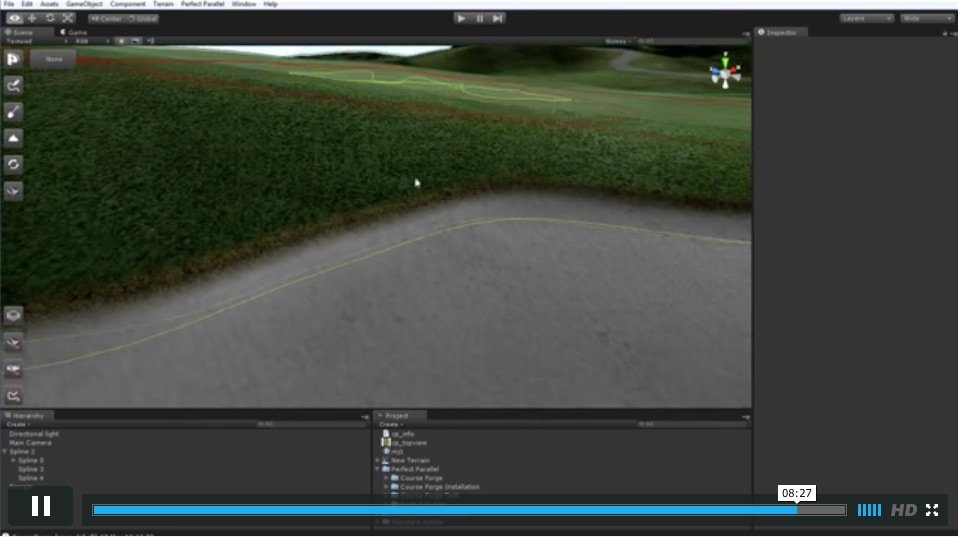Golf Course Software Design Free Mac
11/8/18
- Golf Course Software Design Free Mac Software
- Golf Course Software Design Free Mac Downloads
- Golf Course Software Design Free Mac Download

Golf Course Architecture 101: Part 6

- How to use this free Golf Course Design Software: After launching the software, click on the Create button and enter the required information, like course name, course designer name, climatic conditions, course location, etc. After filling up all the necessary details, click on Create Course button. This will take you to the main design screen.
- This is one of the more interesting golf simulation software platforms on the market. There are more than 100,000 courses to choose from. Yes, you read that correctly. The Golf Club game is entirely unique because it allows users to design their own courses.
- The very first draft of a golf course is a hand-drawn sketch. Next, our own golf design software digitalises the sketch and draws up a detailed design. Using this technique, we can very quickly make the changes that are always necessary during any project development. Equally usefully, the software also gives us precise distance and area data.
'Golf Genius has taken us to the next level for club events. I’m really impressed with the easy-to-use software, continuous updates, personal service and support. The TV leaderboards, professional scorecards, and the ability to make changes from anywhere on any computer are just a few of the many reasons I would highly recommend Golf Genius.
Schools of design
At The Fried Egg, we often talk about the parallels between golf course architecture and music. Both are intellectually and emotionally evocative artforms that very closely connect with the audience, or in the case of golf, the players. A golf course is like an album with 18 songs. The best courses, like the best albums, are cohesive and varied at the same time. Throughout the best courses, the collection of holes provides highs and lows, lulls and crescendos, and creative flourishes in abundance.
Extending this music analogy, the schools of architecture are like musical genres, and understanding the schools helps a player appreciate the artform. To be more precise, “schools” is a categorical reference to how the designers arrange the elements of a hole to produce a particular experience for the player. Aesthetics and design style are a different matter.
It is generally accepted that throughout the history of golf course architecture, since it became a recognized craft and then profession, three schools formed – penal, strategic, and heroic. To learn much more about the schools of architecture, we highly recommend Geoff Shackelford’s book Grounds for Golf. As a primer, a bit about the evolution of the different schools.
As golf’s popularity grew, it was natural for early course developers and clubs to turn to Golf Professionals to design their courses. If they know how to play the game so well, they must be good at designing courses too, right? It is not surprising that those Pros applied their limited paradigm onto their designs. The penal school can be summed up simply: There is a right way to play a hole. Hit the required shots, which are typically straight down the middle, and get rewarded. Errant shots are punished proportionate to the degree of err. Fun golf for Professionals perhaps, but not terribly inspiring to the public.
The strategic school emerged around the turn of the century as a reaction to this one-dimensional approach to design. The Old Course was the primary source of inspiration and as Desi Isaacson explained in his article, a bunker at Woking was the catalyst for a movement. Although strategically designed holes are inherently more complex, the core premise of this school is simple: options. Players are given a choice with each shot to take on as much risk as they can tolerate. Taking on risk by flirting with a hazard or challenging a contour, and pulling off the shot, gains the player an advantage on the next shot. Safe play is an option, but comes at the cost of disadvantage. The players must use their minds and skills.
Coming out of the Great Depression and World War II, a master self-promoter burst on the scene with what he purported to be a new school of design. The man was Robert Trent Jones, and although his ideas were far from new, they did catch on under the Jones brand as the heroic school that he claimed to infuse into his championship designs. Nevermind that Alister Mackenzie and others were writing about and building hazards directly in the line of play to give players the thrill of a heroic carry (conquest), RTJ took this approach to a whole new level. The central idea of the heroic school is that at some point in a round, a player should be presented with an essentially unavoidable challenge – for Jones, often in the form of a water hazard. Rise to the occasion, and claim the big reward. Fall short, and experience the agony of defeat.
/sw-38-revolver-serial-numbers.html. MacKenzie's Country Life Magazine design competition submission
Looking back, students of architecture will see the periods of influence of each of these schools as designers grew and evolved in their craft to more fully engage players. The penal engaged the body (skillful execution). The strategic school also engaged the mind (thoughtful decision making). The heroic school further engaged the heart (courage and thrill seeking). Perhaps on paper, these schools seem distinct. In practice on the ground though, great golf holes and courses have elements of all three. Coming full circle to St. Andrews, like so many things in golf architecture do, The Old Course engages body, mind, and heart not because it fits a mold. It is so deeply resonant because it is filled with nuance, variety, and complexity that defies molds.
As is the case with musical genres, the schools of architecture exist as guideposts to help us better understand and appreciate the art. They are best used for that purpose, rather than sucking the life from the art through rigid categorization. Like music, golf course architecture is meant to be experienced, and regardless of the school, if it moves you, it is good.
We switched at an early date to CAD for everything from draft to detailed plans. Using the standard 'AutoCAD' program, we’ve developed and programmed an add-on that’s tailor-made for golf course design.
Golf course planning with our own golf design software
The starting point for all our projects are either digital site data from surveyors, scanned Land Registry maps, or digital maps. The very first draft of a golf course is a hand-drawn sketch. Next, our own golf design software digitalises the sketch and draws up a detailed design.
Golf Course Software Design Free Mac Software
Using this technique, we can very quickly make the changes that are always necessary during any project development. Equally usefully, the software also gives us precise distance and area data we use to draw up the specifications.
Golf Course Software Design Free Mac Downloads
3D golf course architecture
Golf Course Software Design Free Mac Download
A 3D-grid of each site enables us to precisely determine the planned earth movements, as well as massively increasing planning and cost security. /download-need-for-speed-most-wanted-ppsspp-rar.html. Precise planning data make contingency reserves for many items in the bill of quantities unnecessary, which reduces your construction costs!